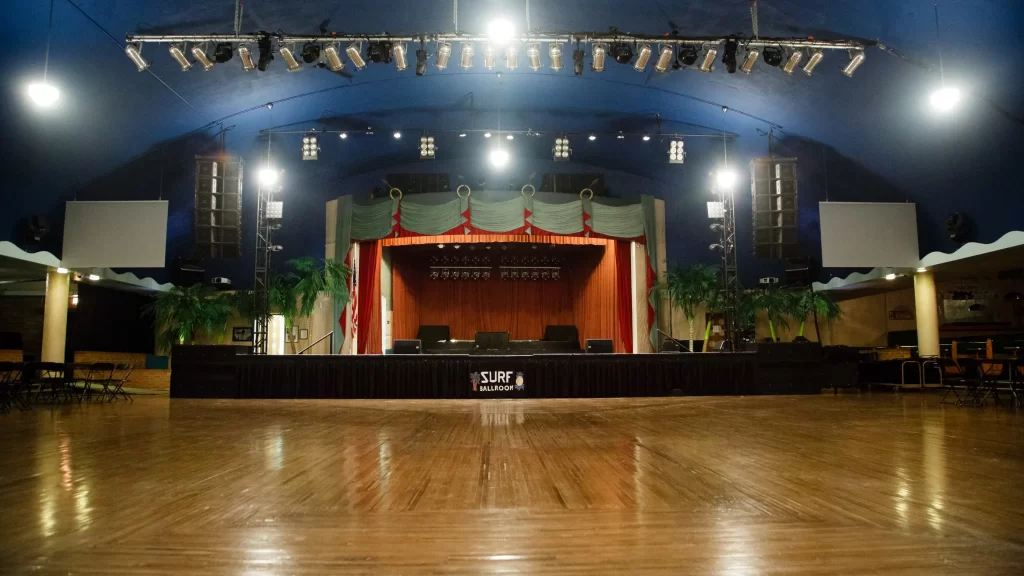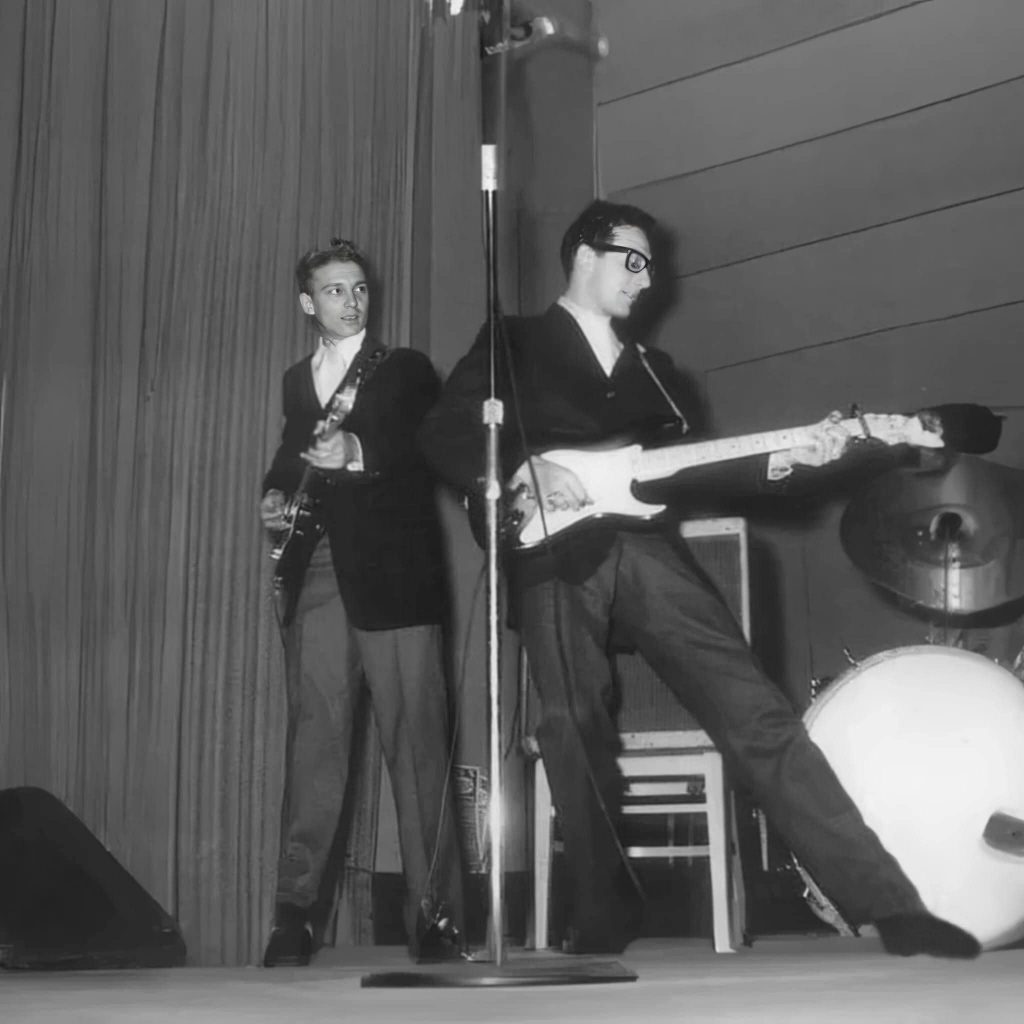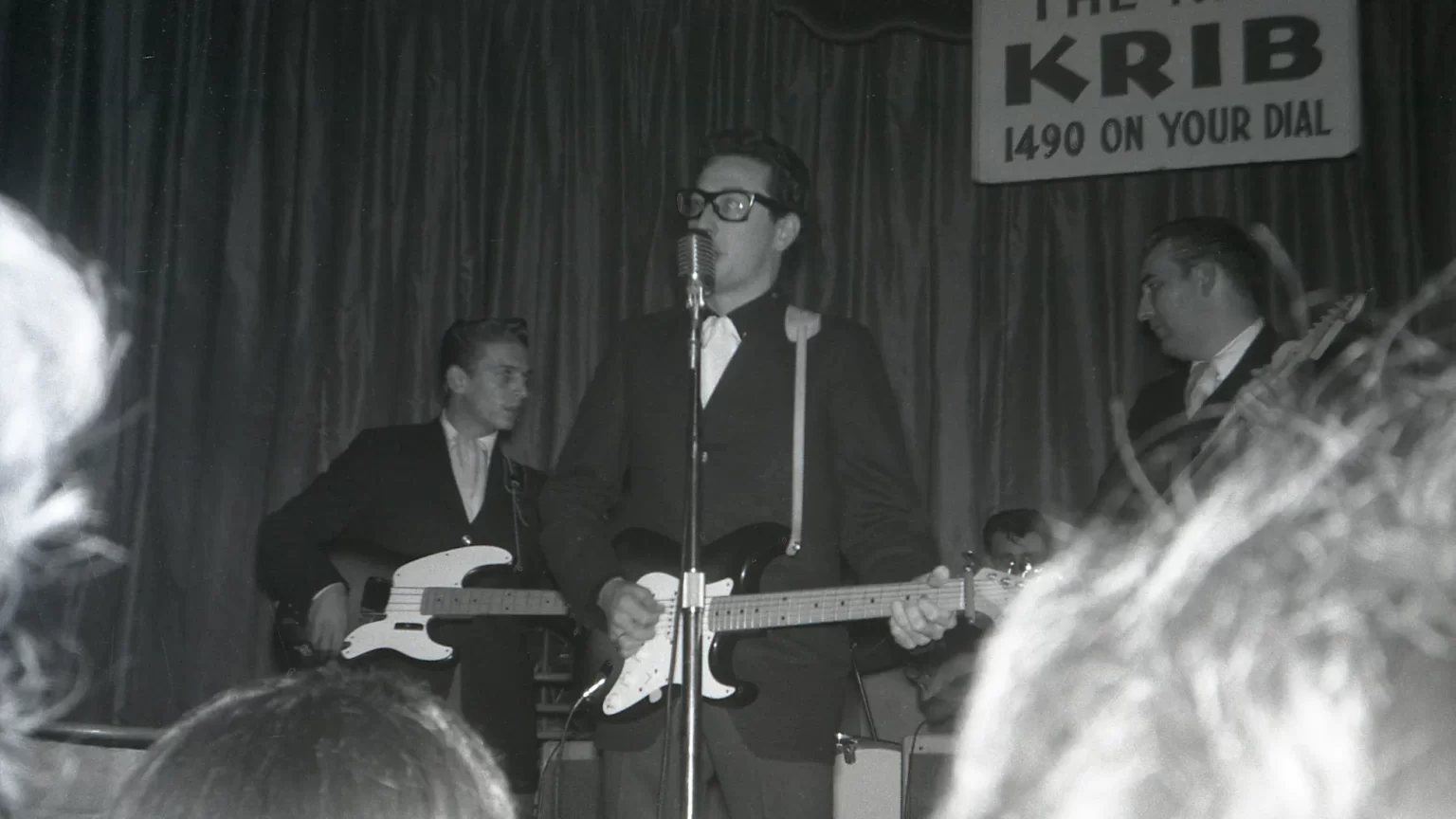This is the third article in a series about The Day The Music Died. The last article focused on the Arctic-like conditions facing the troupe of artists on the 1959 Winter Dance Party Tour. The events of the night of January 31, 1959 related in the article were harsh and unfortunately it was not the first time the troupe had experienced a bus breaking down. A breakdown happened on nearly every leg of the tour.
Buddy Holly needed to replace the Crickets – Jerry Allison and Joe B. Mauldin – for the tour. They had decided to stay in Lubbock, TX and work with Norman Petty at his studio in Clovis, NM. Buddy quickly recruited three young musicians he knew from West Texas. The new Crickets were Tommy Allsup on rhythm guitar, Waylon Jennings on bass guitar, and Carl Bunch on drums.
Carl Bunch put several pairs of socks on his feet when the bus broke down on January 31. He stuffed his feet back inside boots causing his feet to sweat. As the bus got colder the sweat froze and his feet became badly frostbitten. Carl had to be hospitalized and he missed the rest of the tour. Taking his place on drums February 1st and 2nd were Buddy Holly, Ritchie Valens, and Carlo Mastrangelo of the Belmonts.
When the tour bus left Green Bay the morning of February 2 it was minus 19 degrees but warmed into the teens during the drive. However, the heater acted up and the bus driver stopped at a service station to get some assistance in getting it working again. The delay meant the tour would not arrive in Clear Lake, IA until 6 p.m., a mere 2 hours before the scheduled show time. The stars of the 1950s did not have roadies to unload and set up their equipment. They would have to grab a quick bite to eat and then set everything up by themselves.
The Monday night show at Cedar Lake’s Surf Ballroom opened as usual with Frankie Sardo, an Italian-American singer whose song “Fake Out” had been selling well in the Midwest. He was considered a bit of a heartthrob with the under-18 females but was somewhat limited vocally. Next up was 17-year-old Ritchie Valens. He had a cold but he was in a good mood because he had just received word that his song “Donna” had earned a Gold Record. J.P. Richardson, aka The Big Bopper, had a fever but put on his usual energetic show. At one point his jacket was so soaked with sweat he had to change out of it.

After a short break, Dion and the Belmonts took the stage. Among the songs they featured was “Teenager In Love,” scheduled to be their next release and soon to be their first big hit.
Buddy Holly was up next, backed by Allsup and Jennings with Ritchie Valens on drums. When he was announced, the 1,300 teenagers in attendance cheered and surged toward the stage. Buddy opened with one of his favorite tunes from his country and western days, “Gotta Travel On.” Of course the crowd wanted to hear “That’ll Be The Day,” “Peggy Sue,” “Oh Boy,” and “Maybe Baby.” He did not disappoint.
During the show, the stars made calls from the phone in the ballroom’s lobby. Ritchie Valens called home to Pacoima and talked to his older brother, Bob. They talked about meeting in New York after the tour where Ritchie was to be presented with the Gold Record for “Donna.”
J.P. Richardson spoke to his wife to see how she was doing. She was pregnant and J.P. tried to keep in constant touch to make sure she was doing okay. Though he had a fever he laughed and assured her he would see her soon. He was excited at the prospect.
Buddy Holly called his wife, Maria Elena, to see if there was any news from Norman Petty regarding the royalties owed to him. Maria told him she had heard nothing, which angered Buddy. He also complained about the tour’s conditions and told her he was going on to Moorhead, MN, the next stop on the tour, but he did not tell her he was planning to fly. She would say later he did not tell her because he knew she would talk him out of it.
Buddy had learned there was a flying service in nearby Mason City, IA and made arrangements to be flown from there to Fargo, ND after the show. It soon became an open secret. Ritchie, J.P., Dion, and others wanted seats on the plane. Buddy decided the plane would carry him and his band – Tommy Allsup and Waylon Jennings.
Buddy also agreed to take everyone’s laundry, something everyone sorely needed to have done. There had been few Laundromats along the way and no time to use them if there had been. Dirty laundry was stored in the back of the bus and according to those who would interview the stars while on board, the odor was pungent and pervasive. The plan was to have fresh clothes for the troupe when they arrived at the next stop in Moorhead, MN.
J.P. Richardson had the flu and badly needed to see a doctor. He asked Waylon Jennings to let him take his place on the plane. Waylon felt sorry for J.P. and agreed. This led to the now well-known exchange between Buddy and Waylon. “I hope your ol’ bus freezes up,” joked Buddy. Waylon replied in the same spirit, though he would spend the rest of his life wishing he could take back the words.
“Well, I hope your ol’ plane crashes,” he grinned in reply.

Ritchie Valens kept pestering Tommy Allsup to give up his seat. Tommy kept saying no. But just before the car was to leave for the airport, Buddy asked Tommy to check and make sure they had not left anything behind. Inside the Surf Ballroom Ritchie was still signing autographs and talking to fans. Seeing Tommy come back into the building Ritchie asked one more time.
As Tommy told it, “I don’t know. Out of nowhere, I just reached my hand into my pocket, pulled out this fifty-cent piece, flipped that baby, and told Ritchie, ‘Heads or tail?’ Ritchie called heads and won.” Bystanders recalled Ritchie just beamed as he exclaimed, “Hey! That’s the first thing I ever won!”
Carroll Anderson, manager of the Surf Ballroom, gave Buddy, Ritchie, and J.P. a ride to the Mason City Municipal Airport. They arrived there around 12:40 a.m. on Friday, February 3, 1959. Twenty-one-year-old pilot, Roger Peterson, had the four-seat Beech Bonanza aircraft warmed up and ready to go. At 12:55 a.m. the plane took off as a light snow began to fall.
* * * * *
The material in this series is derived from many sources, including Rave On by Phillip Norman; The Day The Music Died by Larry Lehmer; and, The Rolling Stone Encyclopedia of Rock & Roll, 3rd Edition.


